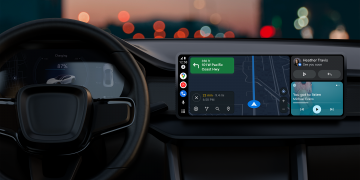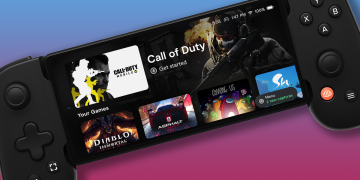Apple and Google have co-opted many features from each other over the years. Still, there are some that are just too good not to share. The iPhone could be improved with some great Android features.
One Place for Notifications
Notifications are one area where Android is head and shoulders above the iPhone. One change that would make a big improvement would be adopting Android’s one location for notifications.
iOS puts notifications in the Notification Center and a separate spot on the lock screen for “Recent Notifications.” This is unnecessary and creates confusion and missed notifications. Just put the Notification Center on the lock screen and call it a day.
RELATED: Android Notifications Are Still Miles Ahead of the iPhone
Notification History

Speaking of missed notifications, Android has a neat trick for finding them. The “Notification History” page is a page that shows all the notifications that arrived on your device over the last 24 hours.
It’s nice to know there’s somewhere you can look if a notification is accidentally dismissed. Notifications can get messy on iPhones, so a feature like this could be super helpful.
System-Wide Color Themes
Starting with Android 12, Android can change the colors of the system theme based on your wallpaper. It’s an easy way to personalize your phone without tweaking much. iOS is even better prepared for a feature like this.
iOS doesn’t have the personalization options that Android has. No home screen launchers or custom icon shapes. That would make it very easy for Apple to add simple wallpaper-based themes to iOS.
Third-Party Control Center Settings
 Graphics by N.D.Fernandez/Shutterstock.com
Graphics by N.D.Fernandez/Shutterstock.com
The iPhone’s Control Center panel is an obvious response to Android’s “Quick Settings,” but it’s severely lacking in features. As of iOS 16, the Control Center settings are all made by Apple.
Android allows third-party apps to make their own Quick Settings toggles. They can put incredibly useful features just a swipe and tap away. Apple should allow third-party apps to make settings for the Control Center.
RELATED: How to Quickly Scan QR Codes on iPhone From the Control Center
Double-Press Power to Launch the Camera
Admittedly, it’s not that difficult to quickly launch the camera on an iPhone. It’s just a swipe away on the home screen, but it could be even faster. Nearly every Android phone can launch the camera when you double-press the Power button.
This shortcut is better than the lock screen method because you can start it before the phone is out of your pocket. Taking photos quickly is important, which makes this shortcut very useful.
RELATED: The Fastest Way to Open Your Camera on iPhone
RCS Messaging

Wait, am I suggesting the iPhone should steal a messaging feature from Android? Yes.
iMessage is great, but texting on an iPhone without iMessage is not great. The reason for that is Apple’s refusal to adopt the newer “RCS” standard. “Green bubble” conversations on the iPhone are still with the old SMS standard.
Photos and videos from Android users look terrible on the iPhone because Apple downgrades non-iMessage conversations to SMS. It would be better for everyone if Apple used RCS. iMessage users can still use iMessage.
RELATED: Google Is Pressuring Apple to Fix Android-iPhone Texting (But It’s Complicated)
Always-On Display
Most Android devices have some sort of “Always-On Display“—a low-power display mode that usually shows a clock and notification icons. This has been present on Android devices for many years, and it’s high time the iPhone joined in.
An Always-On Display is a simple way to be able to see what’s happening on your phone without unlocking the device fully. It’s especially nice if you keep your phone propped up on your desk all day.
Split Screen Mode

Apple has been loading up the iPad with multitasking features, but the iPhone doesn’t have as many. Meanwhile, most Android phones have had some sort of split-screen mode for many years.
iPhones have quite large screens nowadays; they can easily support split-screen mode. It’s not something most people would use, but it would be a welcome feature for the productivity-focused crowd.
RELATED: How to Use Side-by-Side Apps (Split View) on an iPad
Home Screen Shortcuts
It’s no mystery that the iPhone home screen is limited. One feature that wouldn’t require much change to the home screen would be shortcuts that go to certain sections within an app.
You can long-press an app to see its shortcuts, but on Android, you can take that a step further and put those shortcuts directly on the home screen. It’s an even more convenient way to get to your most frequently used sections in apps.
Flip to Silence Calls
 Google
Google
Ending a phone call on a smartphone is not as satisfying as slamming down a landline phone. However, Android has something that’s as close as you can get—flip to silence calls.
The feature is exactly what it sounds like. When enabled, you can put your phone face down to silence a call and mute notifications. This would be a simple feature for the iPhone to adopt, and it’s pretty handy.
RELATED: How to Use Your iPhone While on a Phone Call
Android and the iPhone are more similar than ever, but neither is perfect. They offer two very different smartphone experiences, and that’s a good thing. A few more features here and there would improve the iPhone even more.
Source by www.howtogeek.com






























